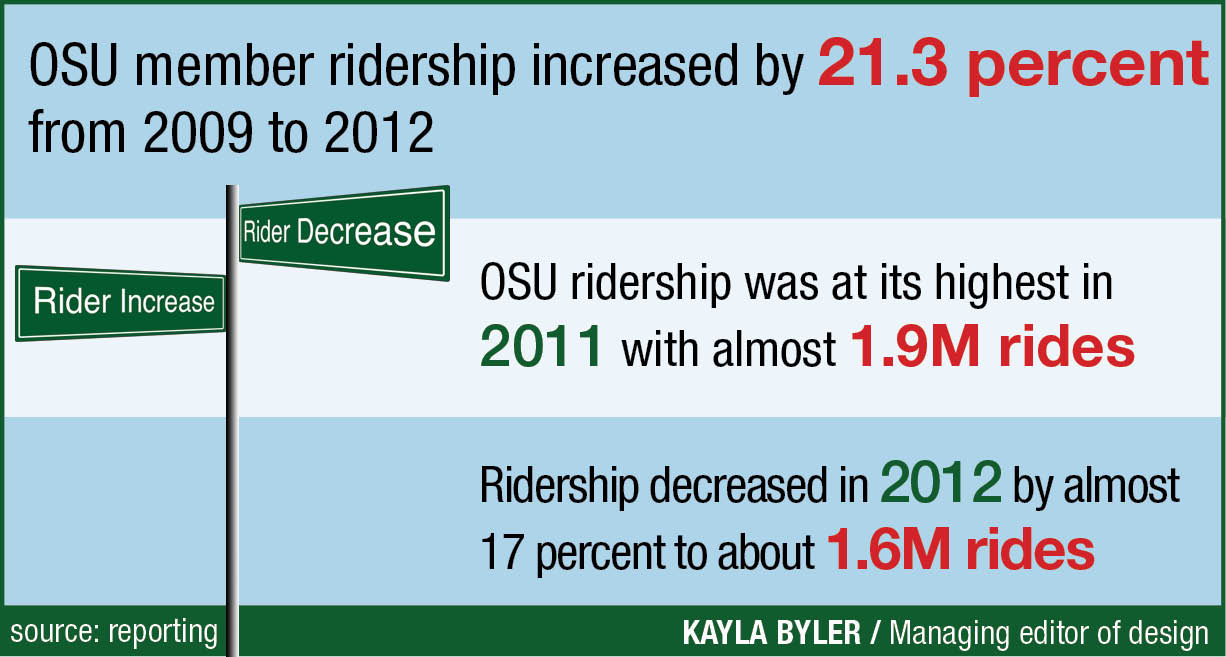
Ohio State community members are riding city buses more, according to data provided by the Central Ohio Transit Authority.
OSU affiliate ridership increased by roughly 21.3 percent from 2009 to 2012, according to COTA data emailed to The Lantern by Marty Stutz, vice president of communications, marketing and customer service for COTA.
In 2009, OSU riders used the COTA nearly 1.3 million times to get around the city. Two years later, ridership peaked at about 1.9 million rides in a year.
The numbers then went down, decreasing by almost 17 percent in 2012 to approximately 1.5 million.
Meanwhile, OSU students’ COTA fees stayed the same, despite the overall revenue increase — students paid a $9 quarterly fee to ride COTA buses when OSU was on the quarter system. On the semester system, students pay a $13.50 fee per semester to ride. Both total a fee of $27 per academic year.
Stutz said the 2012 decrease in riders was likely due to a new swipe system, which allows OSU affiliates to swipe their BuckIDs when they get on the bus as a form of payment, introduced in February 2012.
Prior to the change, students paid a fee for unlimited use of the COTA bus system and simply showed their BuckIDs to the bus driver to gain access, Stutz said.
“We speculate that the swipe requirement eliminated a lot of people taking advantage of the BuckID-COTA program even though they were not actually enrolled (in classes),” Stutz said.
COTA spent $2 million for the enhanced farebox technology, he said.
Some OSU students said they have adjusted to the swipe system since it was implemented.
Richard LeMaster, a fifth-year in Japanese, uses COTA as his mode of transportation to campus.
“I didn’t see it as a big deal after they fixed the initial bugginess of the system,” he said. “I’m guessing they moved to it to keep people from using just any BuckID to get on the bus for free.”
On the other hand, some students said the old system would have benefited them long-run.
“It kind of sucks you can’t use it after you graduate,” said Sophia Eyerman, a fifth-year in English.
BuckID director David Anthony said the vast majority of denied rides are due to non-students attempting to swipe an invalid BuckID.
“Occasionally, we will see students attempting to swipe on the buses prior to the start of the academic term. That issue resolves itself since students can swipe the week classes begin,” he said. “The other issue we see occasionally is damaged cards that won’t swipe. We replace worn or damaged cards at no cost. The only requirement is the old card needs to be turned in to our office.”
Stutz said the new swipe system was partly implemented to keep riders honest.
“The program protects the integrity of the partnership so that students are getting the value for their fee, and not subsidizing non-students to ride for free,” he said.


